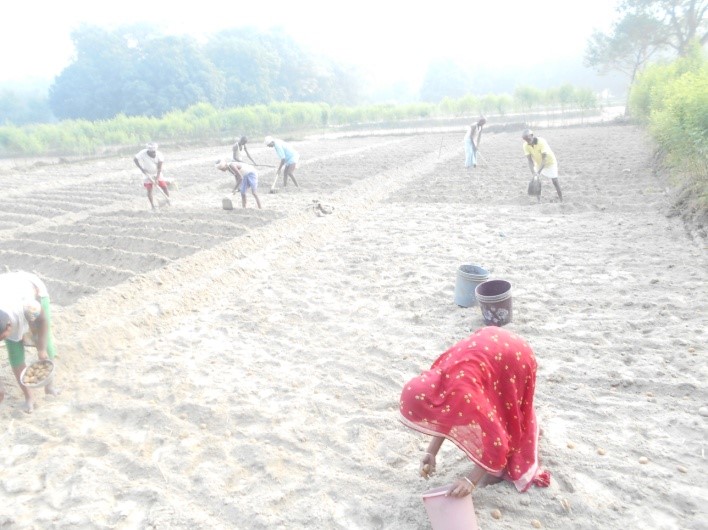Introduction:
This case study describes the collective model of farming as alternate to marginal based on the preliminary outcomes resulting from a project funded by the Australian Centre for International Agricultural Research (ACIAR).
Village:
Bhagwatipur village is located in Andhrathari block of Madhubani district, Bihar, India. This village is inhabited by majority of the economically and socially deprived people. Landholding pattern is very unequal; majority of the landholding is in the hand of few people including both existing and absentee landlord. Actual farmers are dependent on the landlord to rent the land for agriculture. Landlord used to give land on Batiya (sharing) basis in which tenant provide half of the produce to the landlord. All the investment in the farm would be borne by the tenant only; landlord is not investing anything for the improvement of land as well as production of the crop. The tenancy of the land to the farmer is dependent on the wish of the landlord.
Process of intervention:
Identification of farm & farmers:
Sakhi started the project interventions with the support of IWMI. The project is based on maximising the crop cultivation during dry season by judicious use of water. The intervention site was identified based on the availability and suitability of the land for the project and farmers. The major focus is on marginal and tenant farmers. The intervention process started with informal meetings with the farmers, and later formed one group comprising 12 members in Bhagwatipur village.
Shift in the crop calendar:
In the meeting the farmers were assured by the landlord regarding the period of lease. Farmers considered how they could earn more profit out of same land and vegetable cultivation emerged as the preferred solution. By adopting vegetable cultivation, they could cultivate their field round the year as well as gain maximum profit out of the same land.
Individual to collective:
After deciding the crop, when they were told that vegetable cultivation required a lot of labour, input cost and daily management, they realized that all farmers should work jointly on a cooperative basis in which they share their input as well as output equally. One farmer group came forward for cooperative farming under the leadership of Mr Jitan Ram. Earlier all 10 farmers were tenants of the same landlord and they had uneven landholding. In the meeting they decided that they will cultivate all land on a cooperative basis.
Capacity building:
The team of Sakhi & IWMI identified the requirement of the farmers so that they could manage their collective as well as improve their productivity. Many trainings were provided to the members of the group in class room as well as on site, mainly focusing on group management, book keeping, gender, crop management, irrigation management, fertiliser management, pest management.
Outcome:
During the first season they started with cultivation of potato in 10 Katta of land, wheat in 40 katta of land and vegetable in 40 katta of land. It was the first time they planted potato using ridge and furrow method, as well as applied weedicides and pesticides in their field. The first harvest of potato was 10 quintals though they planted the crop late, and earned Rs 10000. The total yield of wheat was around 16 quintals, which they stored for rent payment to landlord. At present they are harvesting vegetables every 3rd day. They are selling to the vendors locally and earning Rs 3000 in a week.
Future:
The process of collective started by few farmers of Bhagwatipur village is becoming a model for other farmers of the village and this is encouraging other farmers of the village to go for the collective farming and change in the cropping pattern. Many farmers started to approach collective farming groups to learn the farming techniques as well as how they are managing their groups. After understanding the benefits of collective farming one more group is ready to move from individual to collective.








